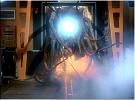Klahn
Posts: 184
Joined: 5/8/2007
Status: offline

|
quote:
ORIGINAL: Shark7
quote:
ORIGINAL: bklooste
quote:
ORIGINAL: mdiehl
quote:
O2 is oxygen it is everywhere it makes no difference. Torpex did explode when exposed to fire a number of ships were lost this way.
You completely missed the point. Yes, Oxygen is everywhere. But EVERYTHING combusts much more readily and much faster in pure O2 than it does in air. Many kinds of METAL will burn fast in pure O2 and not burn at all in air. The oxygen richness near the fire is the factor that controls the rate of combustion.
A torpedo fuel fire fed by a leaking O2 bottle will burn much hotter and much faster than a fire fed by mere air, because pure O2 is 5 times richer in O2 than mere air.
Ryvan has it right. You've got it completely wrong.
And yes, torpex explodes when detonated in a container. That is what it is supposed to do. When it's not contained it burns when exposed to heat, rather than exploding. That's also what it is supposed to do. It's a different explosive than the material that the Japanese used in their warheads.
1. It makes no difference whether it combusts or not when a Torpedo takes a hit it WILL cause a fire , fuel + O2 in air + explosion will do that.
2. How does O2 "leak" out of a compressed container ?
3. As said it will not be a bottle slowly feeding the fire . There is no incidance of a steel melting on anything bigger than a point this requires like 3000 degrees for a non instant period of time. When the air or Oxygen tank explode it will send the air everywhere in 3 Dimensions. There is no occurence of steel melting in these explotions on the other hand alluminium and Magnesium are a major risk.
4. In 99% of these cases there is no O2 released until the warhead explodes shattering the oxygen container this will create a 3D blast wave of O2 , this blast wave does not give the fire the energy to melt steel plate that is an inch or more thick even nuclear weapons had difficulty with this at short range.
5. Both explosive compounds are NOT that different they are both 40-60% TNT based mixtures and hence there properties will vary by a small amount. The Japanese using Hexaninte ( which the Germans also used in their torps) , if they get heated by a fire or hit by a shell both Torpex or Type 97 will blow explode.
Anyway im not going to convince you but
I believe The fact these torps were Oxygen were no different , and Niks losses of 5% of ships are pretty good. In almost every case a fire reached the torpedos which then exploded , i believe this is a difference and better DC may have prevented many of these cases though its arguable what kind of DC you can do when taking heavy punishment.
I will grant the Suzuya is unusual but it may have been the torpedo was armed , faulty dentonator or there may have been an issue with a massive shake in the armoured box.
2. Bad seals. Since I work with 02 bottles a lot in my job, I can tell you for a fact they can leak. The leak can be a slow seepage type leak, or it can be a catastrophic leak (which generally ends in the O2 Cylinder launching through the air like a missile). The catastrophic failure is bad, and can be deadly. Those bottles are under pressure at 2000 psi when full.
I don't think I made it completely clear in my posts either. While I do believe, due to the number of incidents, that the Long Lance was significantly more dangerous to carry than other torps; I don't think the O2 used in the torps was likely the cause. I think it was just a combination of bad damage control, a more powerful warhead, and the Japanese suffering from more air attacks than their opponents. The bad damage control and more air attacks are covered in the game environment. The warhead size is probably too minor to be covered in a game of this scale. There were also differences in shell sizes for guns, depth charge explosives, magazine protection, etc... on a class by class scale. We would never find an end in trying to model every tiny peculiarity of every class of ship. I'm quite happy with it the way it is.
|
 Printable Version
Printable Version










 New Messages
New Messages No New Messages
No New Messages Hot Topic w/ New Messages
Hot Topic w/ New Messages Hot Topic w/o New Messages
Hot Topic w/o New Messages Locked w/ New Messages
Locked w/ New Messages Locked w/o New Messages
Locked w/o New Messages Post New Thread
Post New Thread